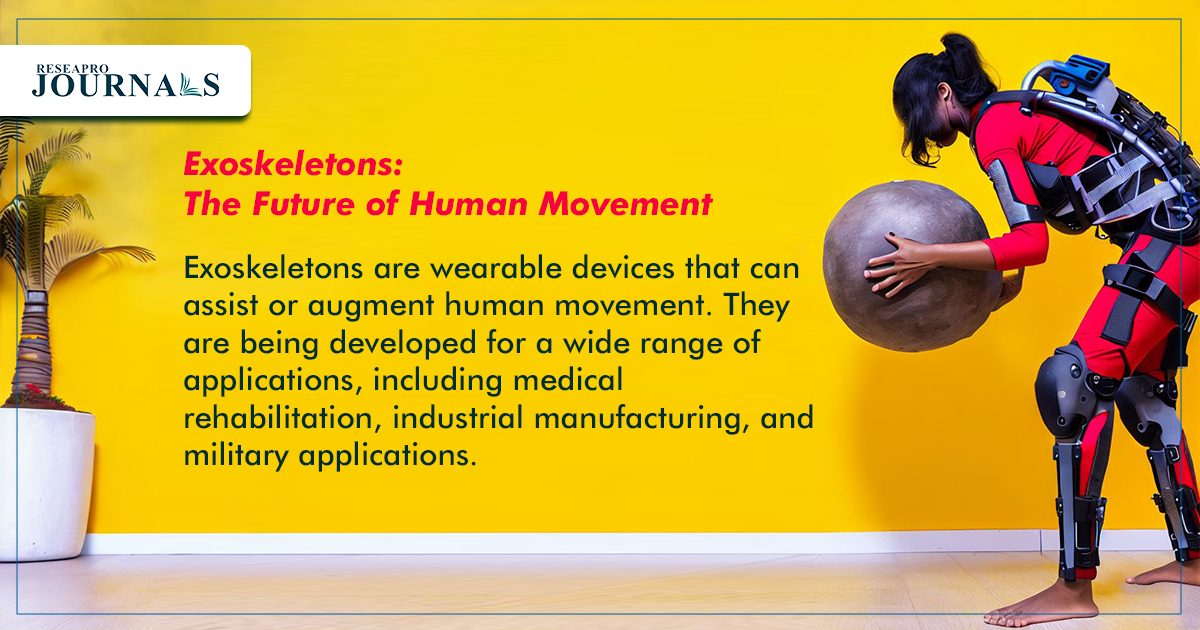Exoskeletons are wearable devices that can assist or augment human movement. They are being developed for a wide range of applications, including medical rehabilitation, industrial manufacturing, and military applications. Here are some specific examples: Medical rehabilitation: Exoskeletons can be used to help people with spinal cord injuries, stroke, and other neurological conditions to walk again. They can also be used to help people with muscle weakness or injuries to improve their strength and range of motion. Industrial manufacturing: Exoskeletons can be used to help workers lift heavy objects, perform repetitive tasks, and reach difficult-to-access areas. They can also be used to protect workers from injuries. Military applications: Exoskeletons can be used to help soldiers carry heavy loads, walk long distances over difficult terrain, and withstand the impact of explosions. Exoskeletons are still under development, but they have the potential to revolutionize many industries and improve the lives of millions of people.




